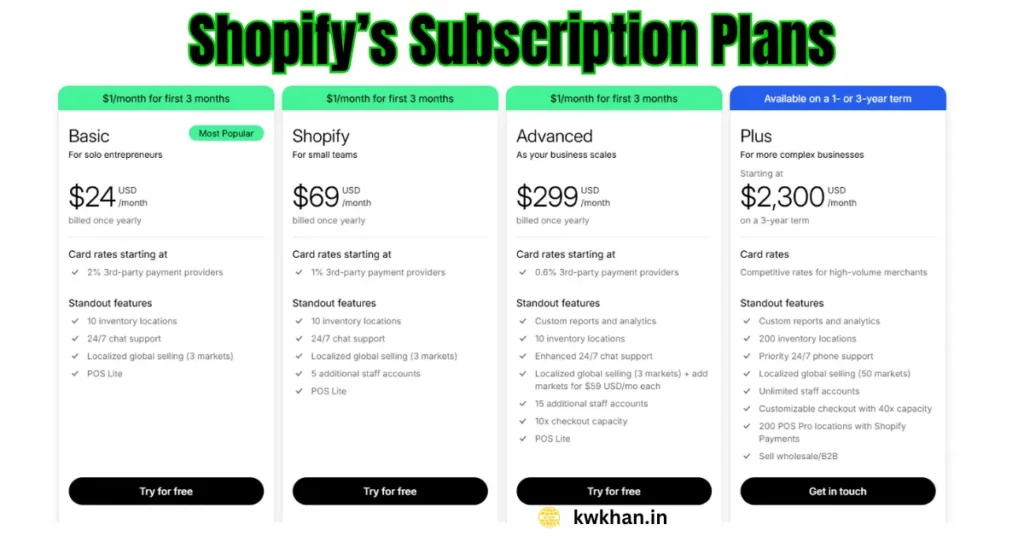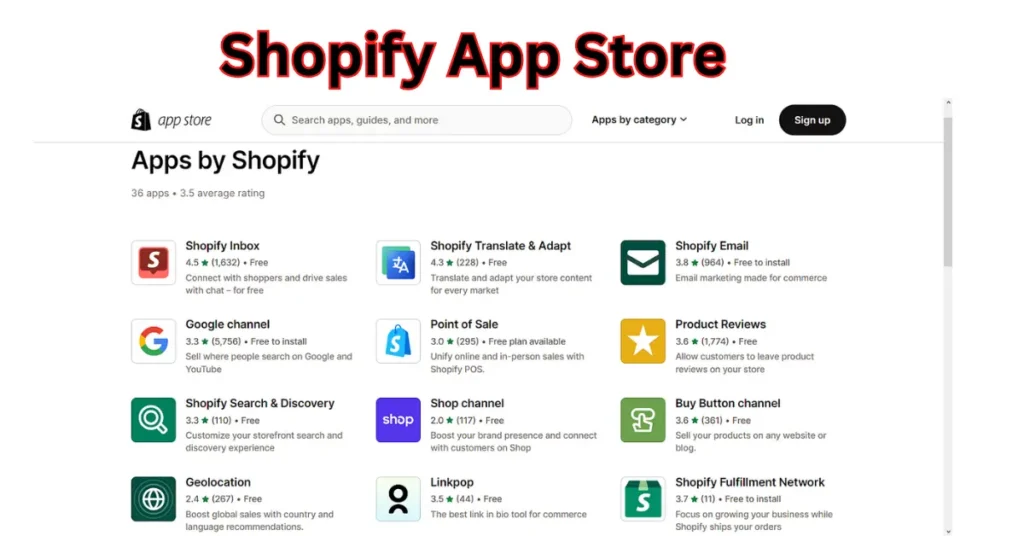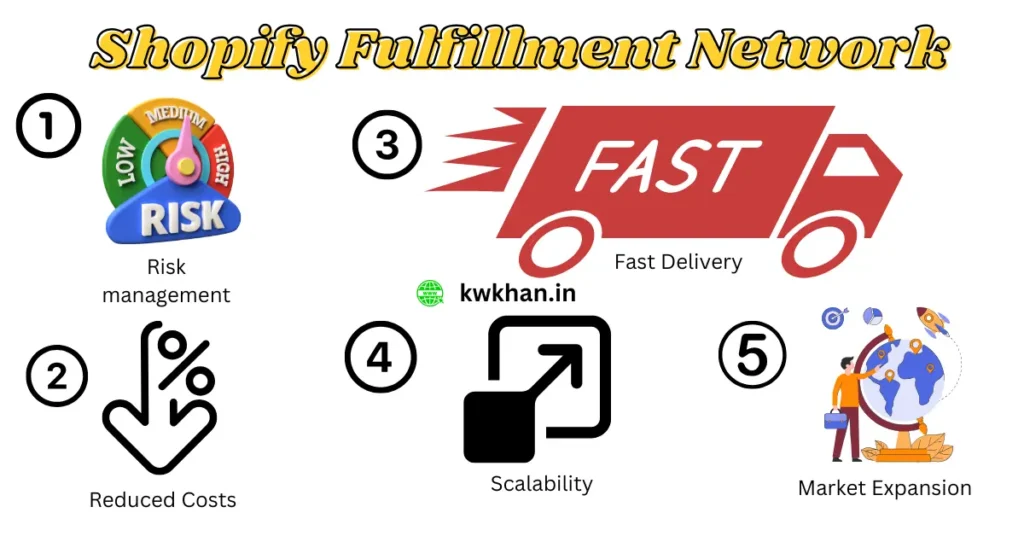Shopify Makes Money
Shopify, a leading e-commerce platform, provides tools to help entrepreneurs establish and grow their online stores. Its revenue generation strategies are multifaceted, enabling the company to cater to businesses of all sizes while maintaining profitability. By understanding “How Shopify Makes Money,” individuals can better appreciate its business model and see how it aligns with their needs. This article will delve into every significant revenue stream Shopify leverages.
1. Shopify’s Subscription Plans

One of Shopify’s primary revenue sources is its subscription-based model. Shopify offers different plans to accommodate businesses at various stages of growth:
- Basic Plan ($24/month): Ideal for startups and small businesses. It provides essential features like an online store, unlimited product listings, and basic reporting tools.
- Shopify Plan ($69/month): Geared towards growing businesses, it includes advanced reporting, lower transaction fees, and more staff accounts.
- Advanced Plan ($299/month): Tailored for large-scale operations, it features custom reporting and the lowest transaction fees.
- Shopify Plus is Shopify’s enterprise-level solution, designed for high-volume and rapidly growing businesses requiring advanced features and customization. Pricing for Shopify Plus starts at $2,300 per month for a 3-year term or $2,500 per month for a 1-year term. For more complex business structures, a variable platform fee based on revenue and business model may apply.
Key Features of Shopify Plus:
Advanced Customization: Access to the checkout.liquid file allows for tailored checkout experiences to meet specific business needs.
Scalability: Supports high-volume sales, capable of handling thousands of transactions per minute, ensuring stability during peak times.
Dedicated Support: Provides a dedicated Merchant Success Manager and 24/7 priority support to assist with business growth and technical challenges.
B2B Functionality: Includes built-in tools to manage wholesale and direct-to-consumer operations from a single platform.
API Access: Offers advanced API resources for seamless integration with third-party systems and custom applications.
Multiple Store Management: Allows the operation of multiple stores under one account, facilitating international expansion with localized storefronts.
Revenue Impact:
- Shopify earns predictable revenue from monthly and annual subscriptions.
- Businesses often scale to higher plans as they grow, increasing Shopify’s revenue over time.
Shopify also offers a free trial, which helps attract potential users who may convert into paying subscribers.
Focus Keyword Mentions:
- Shopify’s subscription plans form a significant part of how Shopify makes money.
- These plans cater to diverse business needs, ensuring how Shopify makes money through consistent and scalable revenue.
- Understanding subscription plans is key to seeing how Shopify makes money.
2. Transaction Fees
Beyond subscriptions, Shopify generates revenue through transaction fees. Every time a customer makes a purchase using Shopify, a small percentage of the sale goes to Shopify. The specifics are:
- Shopify Payments: This is Shopify’s in-house payment gateway. Users of this gateway pay no additional transaction fees but are charged credit card processing fees.
- Third-Party Gateways: Businesses using external payment processors pay additional fees, typically 2.0% to 0.5%, depending on their plan.
Example:
If a merchant sells $10,000 worth of products in a month, Shopify can earn $50 to $200 in transaction fees (depending on the plan and payment gateway).
Revenue Impact:
- Shopify incentivizes merchants to use Shopify Payments by eliminating transaction fees, ensuring a dual benefit: no third-party dependency and steady revenue.
Focus Keyword Mentions:
- Transaction fees play a vital role in how Shopify makes money.
- Shopify Payments demonstrates another facet of how Shopify makes money.
- This dual system enhances how Shopify makes money from both subscriptions and transactions.
3. Shopify App Store

The Shopify App Store hosts thousands of apps that enhance the functionality of Shopify stores. These apps address various needs, such as marketing, inventory management, and customer support.
How It Works:
- Developers create apps for Shopify’s ecosystem.
- Shopify earns a 20% revenue share from app sales or subscriptions.
Examples:
- Klaviyo for email marketing: Costs $20+ monthly.
- Oberlo for dropshipping: Free to $29.90 per month.
Revenue Impact:
- With over a million merchants using Shopify, app sales contribute significantly to Shopify’s income.
- Developers benefit from exposure, while Shopify earns consistently from app usage.
Focus Keyword Mentions:
- The App Store highlights an innovative way how Shopify makes money.
- Revenue-sharing ensures sustainability in how Shopify makes money.
- Apps and extensions illustrate how Shopify makes money from its ecosystem.
4. Shopify Themes and Templates
Customizing an online store is crucial for branding, and Shopify offers free and premium themes to achieve this. While free themes attract new users, premium themes generate significant revenue.
Revenue Model:
- Premium themes typically cost between $100 and $350.
- Shopify earns directly from themes developed in-house and takes a percentage from third-party theme sales.
Examples:
- Debut: Free theme for beginners.
- Prestige: A premium theme priced at $320.
Revenue Impact:
- Premium themes provide a one-time revenue boost and encourage long-term platform loyalty.
Focus Keyword Mentions:
- Themes and templates represent a creative approach to how Shopify makes money.
- Customization drives user satisfaction, enhancing how Shopify makes money.
- This revenue stream showcases how Shopify makes money beyond subscriptions.
5. Shopify Plus
Shopify Plus targets large enterprises needing advanced features and support. It is significantly more expensive, with pricing starting at $2,000 per month, tailored to the client’s requirements.
Benefits of Shopify Plus:
- Dedicated account managers.
- Advanced API integrations.
- High-volume sales support.
Revenue Impact:
- Shopify Plus clients contribute more than smaller businesses, making it a crucial revenue driver.
Focus Keyword Mentions:
- Shopify Plus is a premium example of how Shopify makes money.
- Enterprise-level features exemplify how Shopify makes money from top-tier clients.
- This premium tier strengthens how Shopify makes money from large-scale operations.
6. Shopify Fulfillment Network

Shopify’s Fulfillment Network provides warehousing, packing, and shipping solutions to merchants. This service helps businesses scale without managing logistics independently.
Revenue Model:
- Merchants pay for storage, packaging, and shipping.
- Fees are customized based on the volume and complexity of services.
Revenue Impact:
- This model increases Shopify’s relevance to merchants while adding a robust revenue stream.
Focus Keyword Mentions:
- Fulfillment services illustrate another way how Shopify makes money.
- Logistics support underscores how Shopify makes money by solving merchant pain points.
- Shopify’s integrated network demonstrates how Shopify makes money from diversified solutions.
7. Other Revenue Streams
In addition to the above, Shopify earns through:
- Shopify Capital: Provides business loans and earns through repayment interest.
- Shopify POS (Point of Sale): Revenue from hardware and software for physical stores.
- Affiliate Partnerships: Earnings from referrals and collaborations.
Revenue Impact:
- Shopify Capital supports merchant growth, ensuring mutual profitability.
- Shopify POS expands Shopify’s reach to brick-and-mortar stores.
Focus Keyword Mentions:
- Shopify Capital is a vital aspect of how Shopify makes money.
- POS services enhance how Shopify makes money from omnichannel sales.
- Partnerships show how Shopify makes money through ecosystem synergies.
Conclusion
Shopify’s diversified revenue streams demonstrate its adaptability and focus on solving merchant challenges. By leveraging subscriptions, transaction fees, apps, themes, and more, Shopify remains a profitable and innovative leader in e-commerce. For anyone exploring e-commerce, understanding “how Shopify makes money” is essential to appreciating its value proposition and potential.
